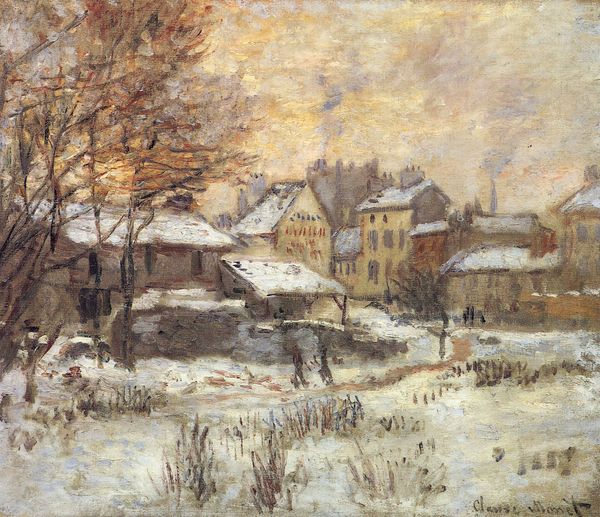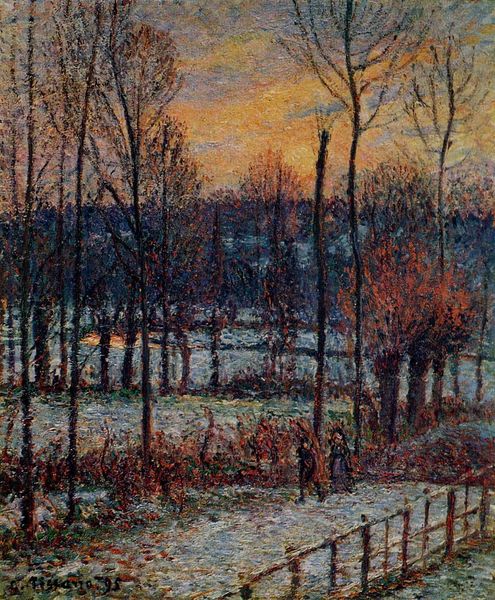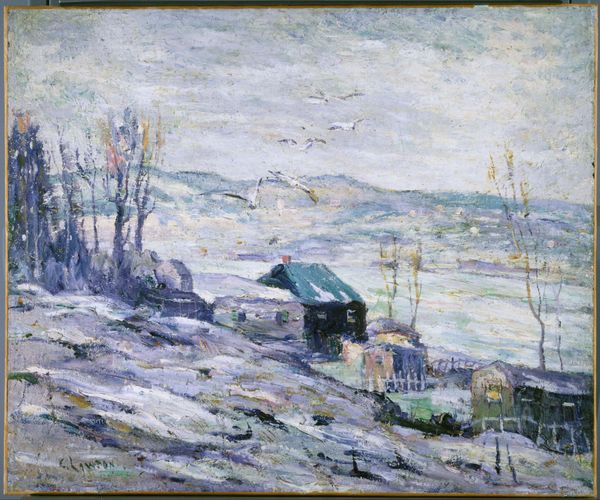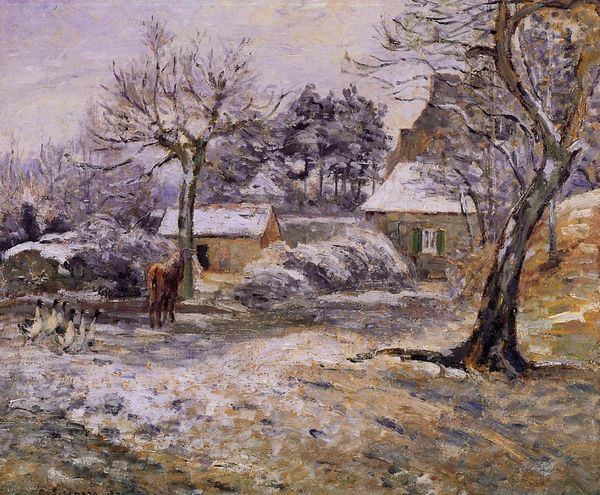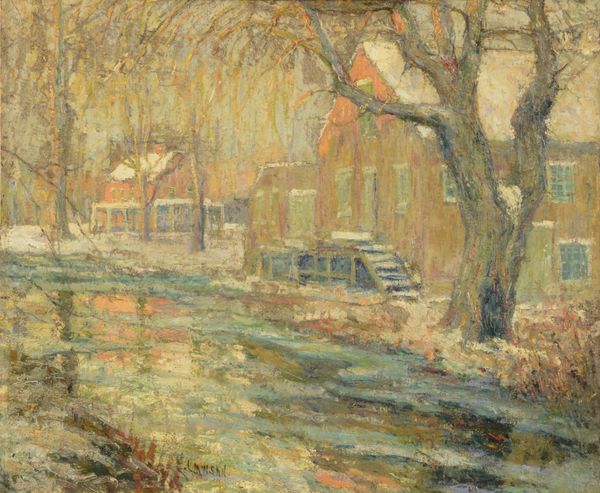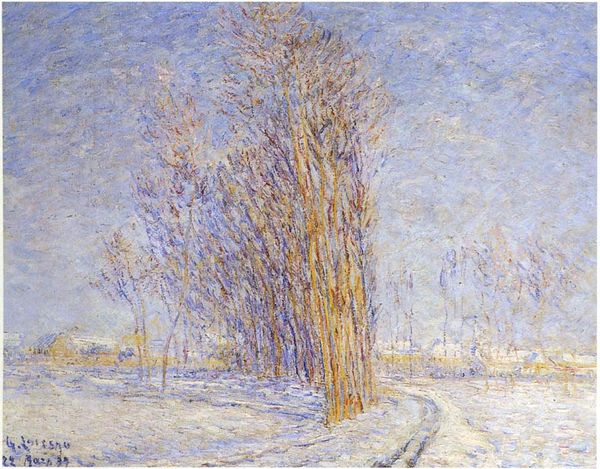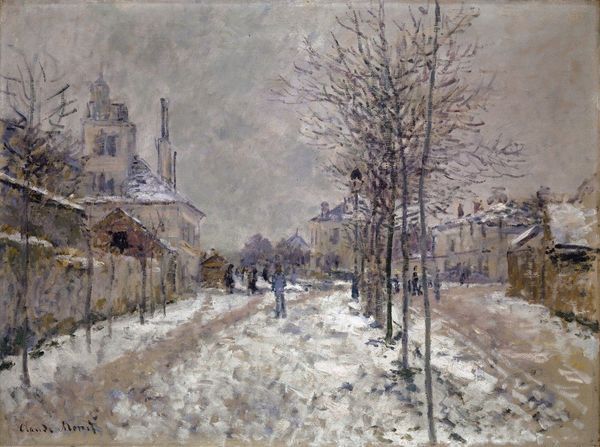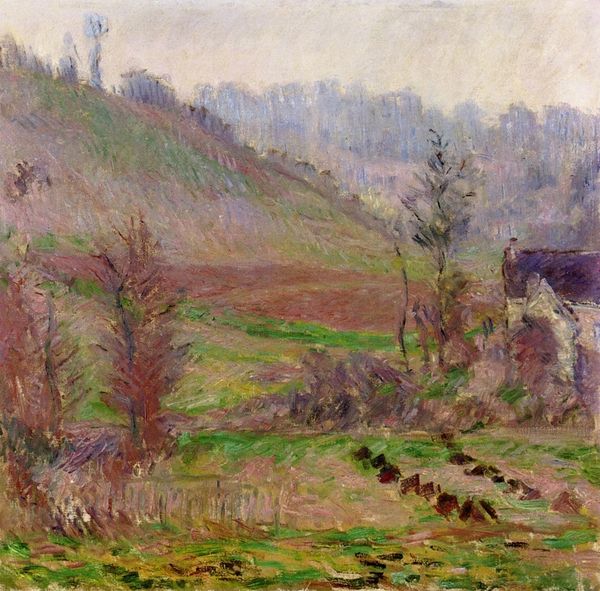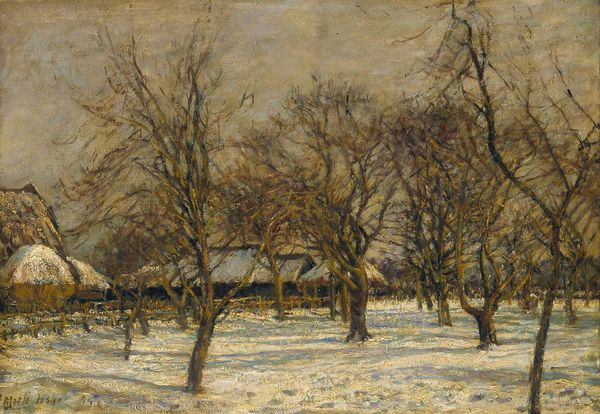
painting, plein-air, oil-paint
#
tree
#
impressionist
#
painting
#
impressionism
#
impressionist painting style
#
plein-air
#
oil-paint
#
landscape
#
winter
#
impressionist landscape
#
forest
#
plant
Dimensions: 60.5 x 80.5 cm
Copyright: Public domain
Curator: Paul Gauguin painted this scene, "Garden under Snow," in 1879, utilizing oil paints. It now resides here at the Budapest Museum of Fine Arts. What's your initial impression? Editor: Cold, but surprisingly vibrant. The muted colors create a stark atmosphere, yet there's a certain warmth radiating, specifically in the way the light touches the snow-laden branches. It almost romanticizes winter, I wonder about the effect of winter scenes in general... Curator: The setting certainly reinforces the period’s interest in landscape as a subject. This work speaks volumes about the institutional embrace of impressionism that was emerging. You have artists finding value in the ephemeral and the everyday. Editor: I'm intrigued by how Gauguin uses these seemingly simple bare trees in the composition. For many cultures, the starkness of bare trees can be interpreted as a symbol of resilience, perhaps even endurance during difficult times, wouldn't you agree? Curator: Perhaps. It’s interesting to view this piece within the larger Impressionist movement. The impressionists' focus on plein-air painting was considered a radical shift. Suddenly, depicting scenes and moments from modern life took precedence over allegorical and mythological paintings. Editor: The symbolism feels potent; that blanket of snow covering everything has connotations of purification and dormancy, or perhaps the quiet anticipation of renewal. In literature and myth, snow is frequently associated with cleansing, creating space for rebirth... Curator: It makes you wonder how audiences at the time reacted to works such as this. Landscape painting served many roles in France. It could be seen as a celebration of the countryside or at other times it expressed subtle political statements regarding land and ownership. Editor: I guess the snow really obscures ownership! As an artwork, its simplicity really encourages meditation on time's cycles. Overall, a really striking, understated statement. Curator: Absolutely, a key representation of its time. And the way its symbolism resonates demonstrates art’s long-lasting role in how we look at the world and one another.
Comments
No comments
Be the first to comment and join the conversation on the ultimate creative platform.

